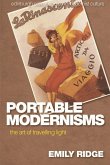*APPROVAL* Explores hieroglyphs as a metaphor for the relationship between new media and writing in British modernism One object attracts more tourists than any other at the British Museum: the Rosetta Stone. Its decipherment by Jean-François Champollion and the discovery of King Tutankhamun's tomb in 1922 contributed to creating a worldwide vogue for all things Egyptian. This fascination was shared by early twentieth-century authors who invoked Egyptian writing to paint a more complicated picture of European interest in non-Western languages. Hieroglyphs can be found everywhere in modernist novels and in discussions of silent film, appearing at moments when writers and theorists seek to understand the similarities or differences between writing and new recording technologies. Hieroglyphic Modernisms explores this conjunction of hieroglyphs and modernist fiction and film, revealing how the challenge of new media spurred a fertile interplay among practitioners of old and new media forms. Showing how novelists and film theorists in the modernist period defined their respective media in relation to each other, the book shifts the focus in modernism from China, poetry and the avant-garde to Egypt, narrative and film. Jesse Schotter is Assistant Professor of English at The Ohio State University. Cover image: Publicity photo for Orson Welles's planned adaptation of Heart of Darkness (1939), Welles Mss., Box 30, Courtesy of the Lilly Library, Indiana University, Bloomington. Likeness of Orson Welles appears courtesy of The Estate of Orson Welles, represented exclusively by Reeder Brand Management. Cover design: [EUP logo] edinburghuniversitypress.com ISBN 978-1-4744-2477-6 Barcode








